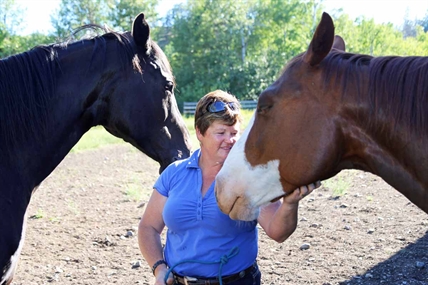During the horse and buggy age, farriers were as common as mechanics ensuring travellers had four on the floor to get from point A to point B but today, they're an elusive service provider.

Anyone with a horse likely uses the service of someone specializing in horse feet. One local farrier says while there are only a handful listed in phonebooks, they represent maybe a quarter of how many farriers are actually working in the region.
“I’m as busy as I ever want,” Shelley Ogilvie says. She is not able to take on any more clients. “Right now we’re stuck because people are calling left, right and centre to get their horses done and I have no one to refer them to because we’re in a bit of a crunch. One farrier went to work in a mine, another is in school and another got hurt.”
While it appears there is a shortfall of farriers in the area, Ogilvie, who has been around horses her entire life and in the business for 30 years, believes there are a lot more farriers today than there was even 10 years ago.
“Farriers are becoming far more numerous because a lot of agriculture properties are being bought up by small property owners who are only interested in horses and not in farming,” she says. “There’s a strong trend towards this.”
The grandmother says she chooses to work only with horses she sees regularly and as a result is not often exposed to many severe hoof-related problems, though she has seen a case where white line disease got so out of hand the hoof completely separated from the foot. White line disease is progressive, occurring when the area between the hoof wall and sole becomes damaged, allowing fungus to enter. The resulting infection eats away at the hoof wall gradually separating it from the sole.






